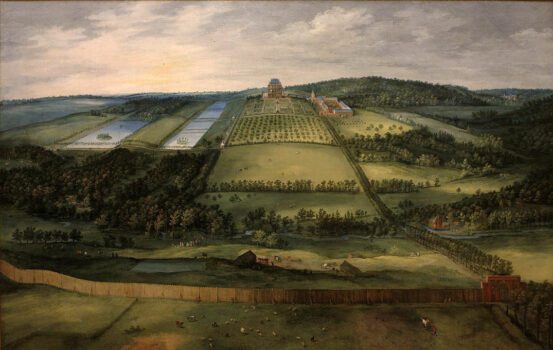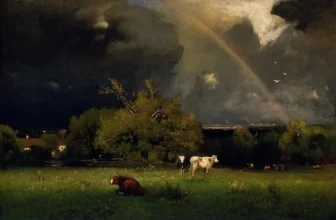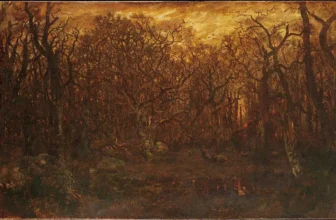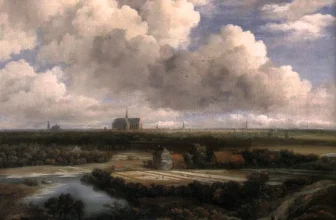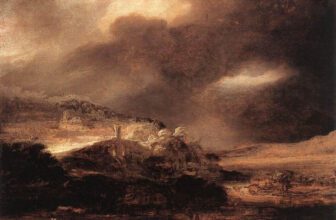Jan Brueghel the Elder’s Most Famous Paintings
Jan Brueghel the Elder stands as one of the most fascinating and influential painters of the early 17th century, a period blossoming with artistic innovation and cultural vibrancy in the Flemish region. Known for his breathtaking detail, vibrant use of color, and intricate compositions, Brueghel’s works continue to captivate audiences worldwide centuries after his passing.
The Story of Jan Brueghel the Elder
Born in 1568 in Brussels, Jan Brueghel the Elder was born into an illustrious artistic family. His father, Pieter Bruegel the Elder, was already a celebrated painter renowned for his vivid depictions of peasant life and landscapes. Tragically, Pieter died when Jan was only around 11 years old, leaving a profound legacy and an artistic path that young Jan would follow and expand.
Jan Brueghel trained under his father’s influence but soon developed his own distinctive style. Settling in Antwerp, a thriving artistic hub, he became part of the Flemish Baroque movement, deeply influenced by the innovations of Peter Paul Rubens, who became both a collaborator and a friend. Throughout his career, Jan Brueghel earned the nickname “Velvet Brueghel” for his delicate brushwork and richly textured compositions.
What Is Jan Brueghel the Elder Known For?
Jan Brueghel the Elder is best known for his exquisite still lifes, detailed landscapes, and allegorical scenes bursting with symbolism and natural beauty. His paintings often featured flowers, fruits, animals, and mythological or biblical figures, carefully arranged in meticulously composed settings. He pioneered a level of precision and realism that elevated still life painting into a form of poetic expression.
One of his signature elements was his ability to render tiny details—each petal, leaf, and insect was painted with extraordinary care. This technical mastery earned him great acclaim and set new standards for artists in his genre.
The Uniqueness of Jan Brueghel the Elder’s Paintings
What sets Jan Brueghel’s paintings apart from others of his era is his unrivaled attention to detail and his vibrant use of color. Unlike many contemporaries who focused on grand religious or historical scenes, Brueghel turned his gaze to nature and the microcosms of life. His flower still lifes are often seen as visual feasts, combining botanical accuracy with imaginative arrangement.
Another unique aspect was his collaborative work with other masters, especially Rubens. Often, Brueghel would paint the landscapes or still life elements, while Rubens added the human figures. This blend of talents created dynamic, multi-layered compositions.
Additionally, Jan Brueghel is noted for inventing the genre of “paradise landscapes,” which combined religious themes with dense, lush representations of nature teeming with birds, animals, and plants—an early form of ecological storytelling that was rare at the time.
Jan Brueghel the Elder’s Most Famous Paintings
Several masterpieces define Jan Brueghel the Elder’s artistic legacy:
1. “The Entry of the Animals into Noah’s Ark” (circa 1613)
A vivid and detailed paradise landscape, this painting depicts pairs of animals entering Noah’s Ark amidst a lush forest. It beautifully showcases Brueghel’s skill in rendering diverse species with extraordinary precision.
2. “Flower Still Life” series
Jan Brueghel’s floral still lifes, such as “Vase of Flowers” (c. 1620), are famous for their bright colors and botanical exactness. These works are often bursting with roses, tulips, irises, and exotic flowers, reflecting the 17th-century fascination with botany and natural science.
3. “Allegory of Sight” (1617)
Painted in collaboration with Rubens, this allegorical painting represents one of the five senses through a detailed room filled with scientific instruments, paintings, and luxurious objects. Brueghel’s mastery shines in the depiction of flowers and intricate details around the room.
4. “Paradise Landscape” (1612-1614)
Another iconic paradise scene, this work is packed with a variety of animals, birds, and plants, portraying an idealized vision of the Garden of Eden.
How Many Paintings Did Jan Brueghel the Elder Create?
While exact numbers are difficult to pinpoint, art historians estimate Jan Brueghel the Elder created around 1,500 paintings during his lifetime. Many works were produced in collaboration with other artists, especially Rubens, which makes cataloging and attribution a complex task. Nevertheless, the sheer volume and variety of his work underscore his prolific output and versatility.
The Most Expensive Painting of Jan Brueghel the Elder
Although detailed auction records for Jan Brueghel’s works are limited due to the age and rarity of his paintings, his collaborative works with Rubens tend to fetch the highest prices in the art market. For example, paintings like “The Allegory of Sight” have been valued in the tens of millions of dollars when sold or insured. Individual still lifes and paradise landscapes also command high prices at auctions and private sales, reflecting his lasting importance and the high demand for his works.
The Legacy of Jan Brueghel the Elder
Jan Brueghel the Elder’s legacy is profound and multifaceted:
Innovation in Still Life and Landscape Painting: He elevated these genres with his precision and lush detail, influencing countless painters after him.
Collaborative Art: His partnership with Rubens set a precedent for artistic collaboration, merging different specialties into cohesive masterpieces.
Naturalism and Scientific Approach: His works reflect early modern interests in botany and zoology, bridging art and science in ways that were groundbreaking for his time.
Artistic Dynasty: He fathered Jan Brueghel the Younger, who carried on his style, and together, the Brueghel family became one of the most important artistic lineages in Flemish art history.
His paintings are found today in some of the world’s most prestigious museums, serving as vital cultural artifacts that connect us to the rich tapestry of 17th-century European art.
Where Are Jan Brueghel the Elder’s Paintings Located Today?
Jan Brueghel the Elder’s works are housed in numerous major museums around the globe. Some of the key locations include:
The Prado Museum (Madrid, Spain): Home to several of his masterpieces, including collaborative works with Rubens.
The Louvre Museum (Paris, France): Contains exquisite still lifes and detailed paradise landscapes.
The Royal Museum of Fine Arts (Antwerp, Belgium): Situated near where Brueghel worked, it preserves many important Flemish Baroque paintings.
The Kunsthistorisches Museum (Vienna, Austria): Houses many Flemish masterpieces, including Brueghel’s floral and animal compositions.
The Metropolitan Museum of Art (New York, USA): Contains select works by Jan Brueghel the Elder that showcase his detailed technique and subject variety.
Private collections around the world also hold several pieces, and these paintings occasionally appear in major auctions or exhibitions.
Jan Brueghel the Elder is a luminous figure in art history, bridging naturalistic detail and allegorical depth with a mastery that set new standards for painters in the early Baroque era. His delicate brushwork and rich imagery invite viewers into a world where nature’s beauty is celebrated in its fullest glory, and every flower, bird, and animal carries symbolic meaning.
Whether through his paradisiacal landscapes, intricate still lifes, or collaborations with Rubens, Jan Brueghel the Elder’s paintings continue to tell stories of a bygone era—stories of discovery, wonder, and artistic brilliance. For anyone interested in the evolution of European art, exploring his work is a journey through both nature and imagination, immortalized on canvas with unparalleled skill.
